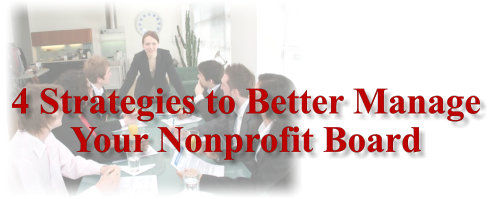An Organization Made up of Organizations



inTHISissue:
-
Evaluation Plans
-
Organization "Merger Fit"
-
Better Manage Your Board
-
Human-Centered AI - Artificial Intelligence
-
Smart Non Profit Marketing
Mission Statement
The goal of Bristol Organizations is to provide service and non-profit Organizations in the NE Tennessee and SW Virginia, the best possible avenue for mutual communication and the greatest exposure to the community.
Resources & How-To's
Policy & Procedure Library
Guide - How to Write Meeting Minutes
All Volunteer Organization?
Read This:
"All Hands On Board" (PDF)
Brochures
Distilling you message (PDF)
Communications
Getting the word out (PDF)
Strategic Planning
Effective Strategic Planning (PDF)
Fundraising
20 Mistakes
Fundraising Readiness Checklist
Get Checklist
Fundraising
Staging Special Events (PDF)
Fundraising
Step by Step Guide (PDF)
Fundraising
Organizing you office (PDF)
Fundraising
Part 1- Getting Ready (MSWord)
Part 2- Identifying Prospects (MSWord)
Part 3- Cultivation (MSWord)
Part 4- Solicitation (MSWord)
Part 5- The Ask (MSWord)
Part 6- Preparing Proposal (MSWord)
Part 7- Stewardship (MSWord)
Email
Basics of Email Marketing (PDF)
Marketing
Promoting your Program (PDF)
Risk Management
Surviving a Crisis
Lawsuits - Need to Know
Collaboration Risks
Volunteers - Balancing Risk
Newsletters
Informing the Publilc (PDF)
Outcome Measurement
Demistifying (PDF)
Board
Leadership for Board Members (PDF)
Systems Checklist
Get Checklist (MS Word)
Board Manual
Checklist
Audit Services
List of Audit Firms (MSWord)
Good Practices Guide
Non Profit Good Practices
Board Recruiting Matrix
Sample Board Matrix (MS Word)
Free Downloads
Kim Konando Downloads (web)
More Free Software
Sarbanes-Oxley Act and Implications
Implications for Non Profits (MS Word)
Get Corporate Sponsorships
How can my small charity get sponsorships (MS Word)
Samples and Templates
Various sample letters, templates, etc. (MS Word)
Specialized Organnization/Board Workshops
Workshop Listing and Description
If you’re a nonprofit leader, managing your board is likely a challenge. Although most nonprofit boards technically manage the ED/CEO, there’s a lot of opportunity and rationale for managing up.
If you don’t work to manage your board, your board members may become unruly and make your organization more difficult to lead. It’s important to be intentional and strategic about “leading up” for a more successful organization, board, and leadership experience.
Here are four key strategies for successfully managing up the board at your nonprofit. Click Here to continue reading.
___________________________________________
By; THOMAS CARLYLE
At a recent forum, CNN’s Fareed Zakaria was asked the ONE thing that children need to learn. His answer? Intellectual discipline. He defined it as the ability to wade through noise, discern the facts, analyze findings and form a point of view.
We echo this sentiment for the social sector. Nonprofits and changemakers need to know what to pay attention to — and what to ignore. That means being savvy consumers of data and market research. And remember don’t let perfect be the enemy of the good.
One of the best ways to bring “intellectual discipline” to your impact management process is to develop an evaluation plan. To learn more about this subject.......... Click Here.
___________________________________________
Co-authored with Felicity Iredale and Portia Pascuzzi
Mergers between not-for-profit (NFP) organizations are increasingly being considered due to current economic and regulatory challenges. This is occurring across the whole sector, from aged care to disability, health to community services and everything in between.
Mergers can present a unique opportunity to bolster service offerings to the community. However, for some, mergers are seen as a way to survive. Either way, it is critical to be “Merger Fit”. You can’t expect to be an agile merger party if your board and organization aren’t ready.
This article discusses some of the key pre-merger steps your organization should consider, starting with a strategic merger framework. To continue reading on this topic........ Click Here.
_________________________________________




By: Avni Gupta-Kagan
Before nonprofits can develop AI-driven solutions to help others, it’s important that they get comfortable with it themselves. Here’s how one nonprofit did it.
How one nonprofit learned to incorporate AI tools, without losing their human-centric focus.
When AI started upending the way people do work, as a global nonprofit, our team at Global School Leaders was skeptical.
While we want to do our work well and efficiently, we care about doing work in a human-centered way, valuing deeply the unique wisdom and perspectives of our team, our partners, school leaders, and students. So, we held back a little bit.
This article explores how we began to lean into AI, while still preserving human-centeredness. Click Here.
_____________________________________________

One of my favorite days of the year is Super Bowl Sunday. The game is always exciting — but the commercials are what truly capture my attention. In my college courses, my students and I analyze Super Bowl ads to explore the best and the worst examples of marketing and corporate social responsibility (CSR). We all love when companies align their brands directly with social good.
We also talk about commercials that are so good the brand gets lost. You walk away loving a clever commercial but don’t know who or what it was for.
In the nonprofit world, we may not have $8 million for a 30-second Super Bowl ad, but we face the same risk: spending precious time and resources on tactics that don’t serve a strategy. To help you avoid that, here are the most common mistakes we see — and how to fix them..... Click Here.
___________________________________________
White Papers, Reports
Plans & Guides

